Rapier and dagger is today a popular combination in HEMA and SCA tournaments. Here I want to discuss the type of daggers I use and explain why I use them and not others, while also taking this opportunity to showcase some beautiful pieces.
So let’s get into it!
En-suite rapier and dagger sets
Daggers were used as companion weapons to swords for some time before the thrust-primary rapier evolved and started influencing the tactics of sword fighting. But at some point in the mid-to-late 16th century, daggers began to appear as en-suite companion weapons usually sporting a ring as a protective element of the hilt, such as the example set below from the Wallace Collection. These are the types of daggers I focus on when I’m teaching and training in the Northern Italian system.
What’s the difference in dagger types?
In many tournaments, and particularly in HEMA tournaments, what you’ll see used in solo rapier and rapier and dagger fights are cup hilted swords and “main gauche” or “sail” daggers. This is often the case regardless of what style the fencer claims to be studying.
I’m a bit of a purist in that I want to be using weapons that are as close as I can get to the weapons that would have been used by the author of the system or manual I’m studying. I mean, why would I study and practice techniques for using a wheel-lock arquebus and then use a flintlock musket in competition? So for me, a cup hilt and sail dagger are decades out of date for the manuals I’m working out of.
Cup hilts and sail daggers began to appear around the middle of the 17th century, 30-40 years after the publication of the manuals by CapoFerro (1610), Fabris (1601 and 1606), and Giganti (1606), and the unpublished treatise of the Vienna Anonymous (1614).
Some might even argue that they’re used in a completely separate system from the Italian systems, since they are popularly known as being used by the mid-to-late 17th century Spanish schools. But the Italians also adopted the cup hilt, at least, late in the 17th century. In fact, that’s what’s illustrated in Marcelli’s 1685-86 manual, below.
But more importantly for me, most of the mid-to-late 17th century century companion daggers are too long for what I’m doing.
While admittedly any kind of knife or dagger may have been used as an off-hand companion to the rapier, and there were always some long knives hanging around throughout history, the daggers that were specifically made as en-suite companions at the end of the 16th century and first decade or two of the 17th, and the daggers depicted in the Northern Italian manuals, were much shorter and simpler than the later sail daggers.
Dagger length
I went down a rabbit hole during the COVID pandemic and started documenting all the daggers I could find from 1610 or earlier in published collections. A friend of mine had a similar thought, and we compared our findings.
With very few exceptions - and I mean maybe two or three at most out of hundreds - all of the en-suite companion daggers we found had blades that were around 12 inches or shorter.
And this makes sense both because of how they were worn, as well as how they were used.
When you fight in a style where you stick the dagger well out in a twisted stance and hold the sword back, then it makes more sense to want to use a longer dagger with more reach.
But when you are holding the sword forward and moving the dagger more tightly around the sword and sword hilt, a longer blade can get in the way. And they didn’t seem to see the need for a full hand protection until that dagger-forward style began to gain in popularity. Most just had a ring to protect the hand.
So the daggers I use are generally ring daggers (and a shell dagger) with a blade around 12 inches long.
As I introduce the dagger tactics here and walk through some of the plays, you should begin to see how the shorter blade length is ideal for how the dagger is used in this system.
Dagger weight
One more thing to note - many daggers made for SCA and HEMA fencing these days are too heavy. I’ve handled a few tournament/practice daggers that were well over a pound.
The two antique examples below from my personal collection are both under 300 grams. From the collections I documented, most are somewhere between 250 and 400 grams. Meaning most of them are less than 0.88 lbs. In my experience, 250-300 grams is ideal.
Extant examples
For the rest of this newsletter issue, I’ll just show examples of some daggers that would have been common around the time of the manuals I work from - specifically CapoFerro’s, Fabris’, Giganti’s, and that of the Vienna Anonymous.
From my personal collection
Italian or German about 1600:
L overall: 13 15/16” (35.40 cm)
L blade: 9” (22.86 cm)
Handle L: 3” (7.62 cm)
Handle diameter max: ¾” (1.905 cm)
Wt: 283 g
Italian about 1600 (this was the model for one of my fencing daggers - shown above):
L overall: 16 ⅞” (42.86 cm)
L blade: 12 3/16” (30.96 cm)
Handle L: 2 11/16” (6.83 cm)
Handle diameter max: ¾” (1.905 cm)
Wt: 255 g
From the Wallace Collection
A772 - German about 1600:
L overall: 15” (38.0 cm)
L blade: 10 ¼” (26.1 cm)
Wt: 310 g
A773 - German about 1600:
L overall: 10 ¾” (27.30 cm)
L blade: 6 ¾” (17.0 cm)
Wt: 134 g
A774 - German about 1600:
L overall: 19” (48.2 cm)
L blade: 12 ⅜” (31.5 cm)
Wt: 390 g
A775 - German about 1605:
L overall: 10 3/4” (27.2 cm)
Wt: 520 g
A776 - German about 1610:
L overall: 16” (40.6 cm)
L blade: 10 ⅞” (27.2 cm)
Wt: 350 g
A787 - German about 1630:
L overall: 14 ½” (36.8 cm)
L blade: 10” (25.4 cm)
Wt: 250 g
A804 - Italian about 1610:
L overall: 14 ⅜” (36.5 cm)
L blade: 9 15/16” (25.3 cm)
Wt: 210 g
Conclusion
I’ll now start posting lessons on the use of the dagger as a companion to the rapier. These will assume you have read the lessons on the solo rapier and have some understanding of its use. So if you’re not there yet, go back and catch up!










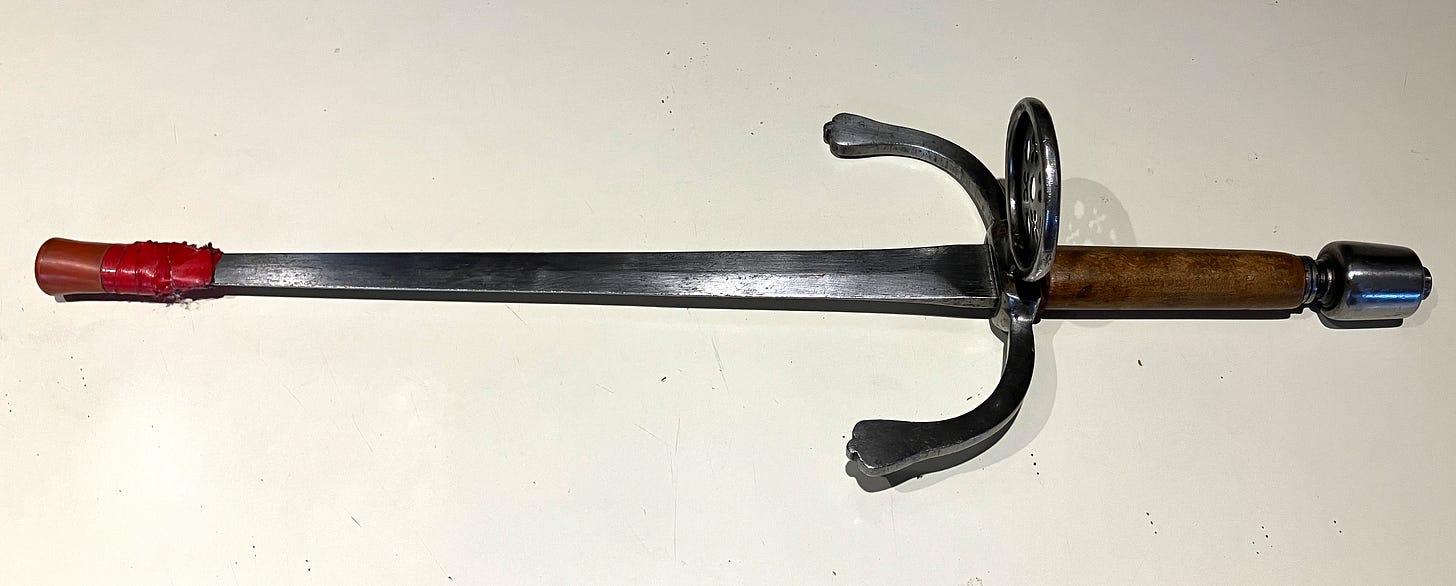






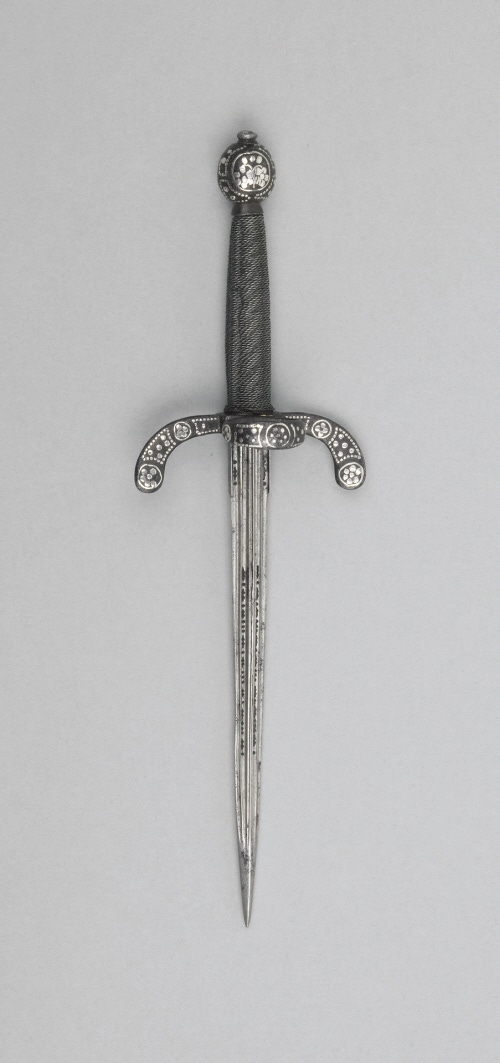
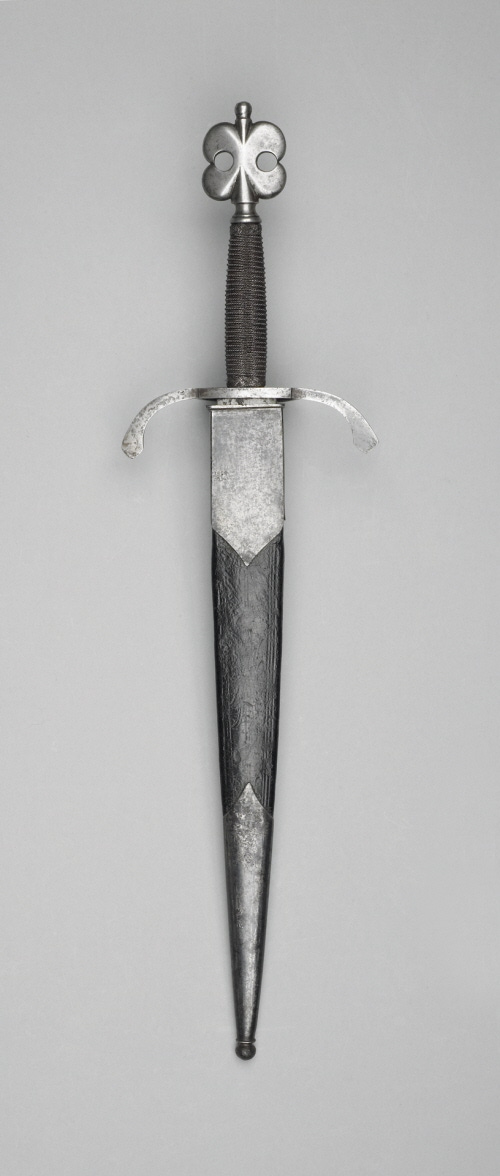

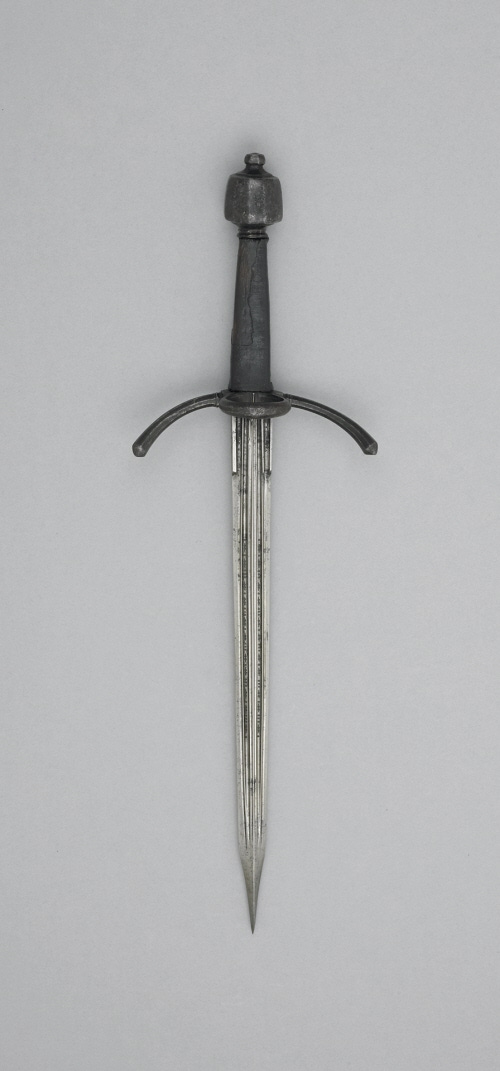
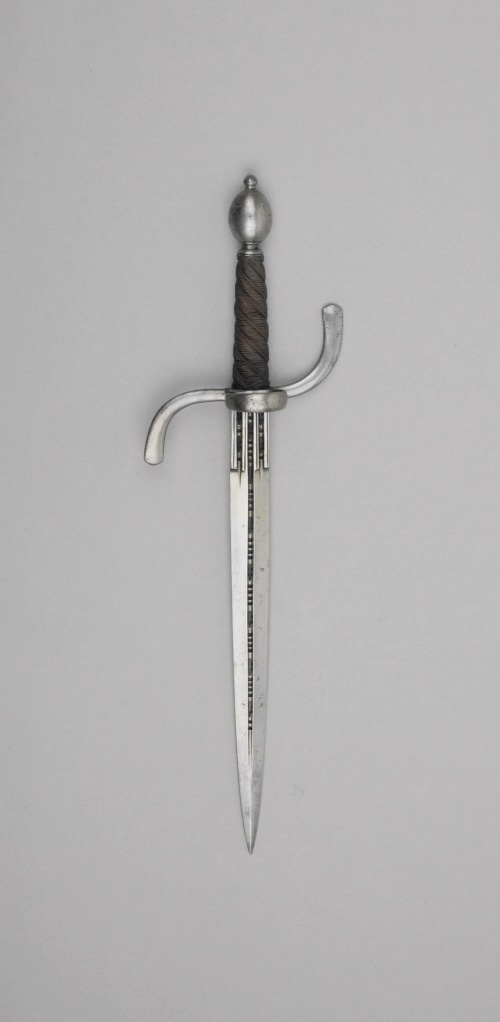

Those are some lovely pieces!
At this point, I think we have:
- stiletto dagger, with thin blades meant for stabbing
- "Bolognese" use daggers, with a bit shorter blades, small quillons and a small ring
- ring daggers, as the ones you presented here
- sail daggers, with a sail protection meant for main-gauche use